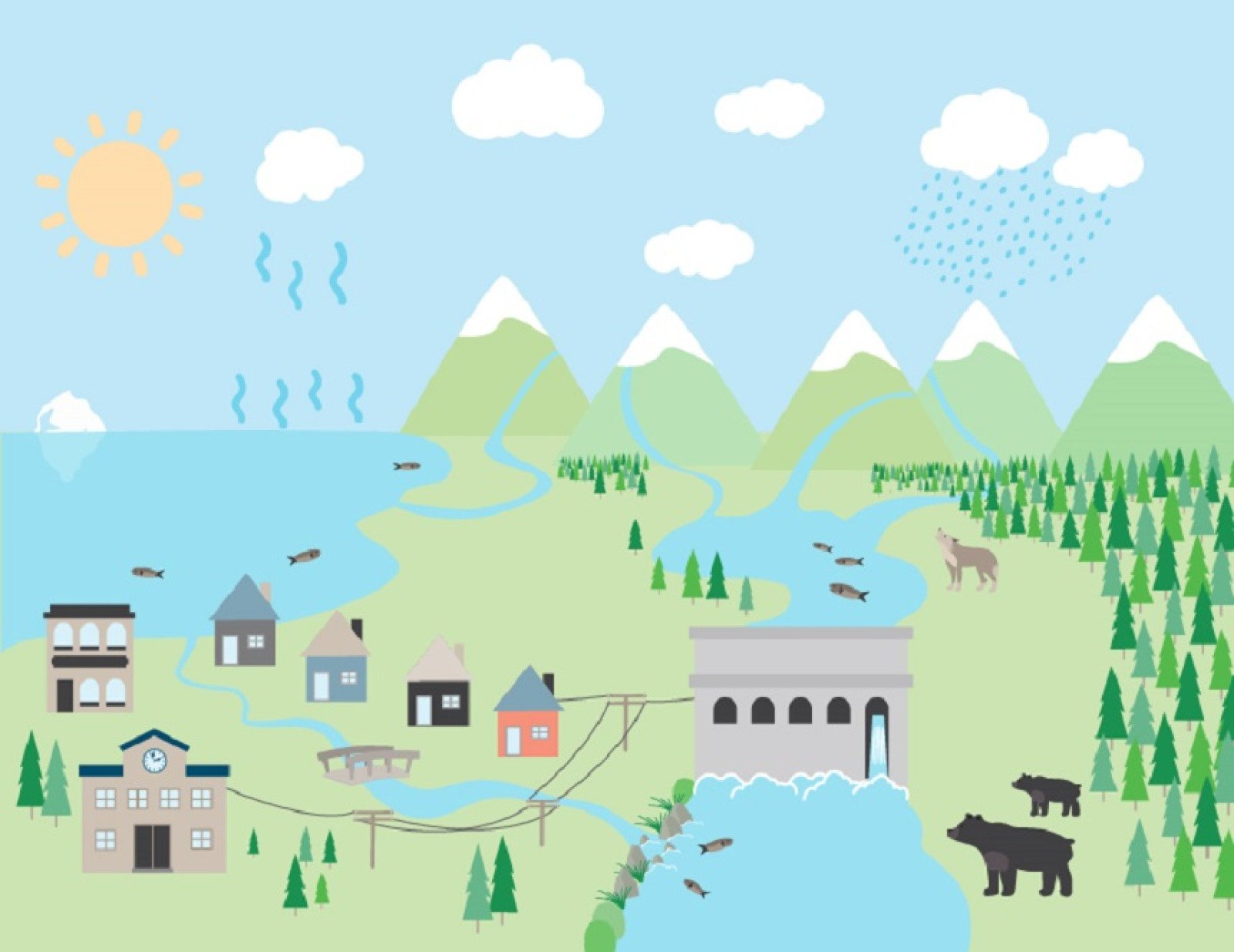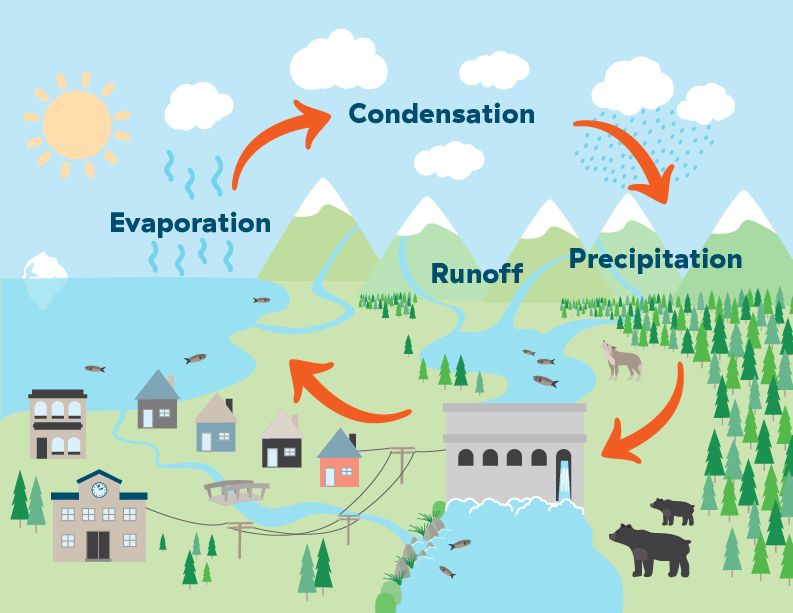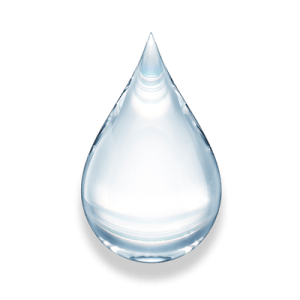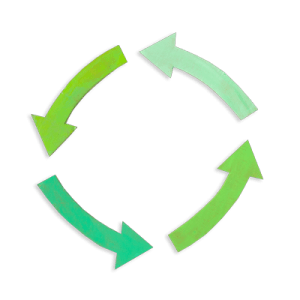
Overview
We follow the path of water from lakes and oceans to the sky and back again by creating our own water cycle diagrams.
Instructions
What you'll need
- “Water cycle” image
- “Water cycle” worksheet (print single-sided)
- Scissors and glue
- Write the word “cycle” on the board and have students think of examples of words with “cycle” in them. Talk about what “cycle” means. Words could include:
- Bicycle
- Unicycle
- Tricycle
- Motorcycle
- Recycle

- Show the “Water cycle” image, explaining that water cycles around the earth over and over again. Talk about each stage of the water cycle on the image.
- Sun: The water cycle is driven by the energy from the sun warming the earth.
- Evaporation: The warmth of the sun causes water from lakes, rivers and oceans to evaporate and turn from a liquid to a gas. The water vapour (gas) rises up into the air.
- Condensation: The water vapour cools as it rises and turns into water droplets, forming a cloud.
- Precipitation: Water droplets in a cloud join together and eventually become too big and heavy and fall from the clouds in the sky. Precipitation can fall as rain, snow or hail.
- Runoff: After the precipitation falls, it flows down towards the ocean and collects in rivers, lakes and streams. Some of it collects underground as well.
- And then the cycle begins again. The sun has been cycling water on Earth over and over for billions of years. The water we drink is older than the dinosaurs.
- Give each student a copy of the “Water cycle” worksheet.
- Cut out the words and use them to label the water cycle diagram.
- Have students share questions they have about the water cycle and keep them for reference when teaching about water.
Modify or extend this activity
- Watch a fun video and lead a quick activity about the “Power of falling water”.
- Alphabetize the words from the “Water cycle” image or use them as challenge words for spelling practice
- Introduce advanced aspects of the water cycle including transpiration and groundwater
Curriculum Fit
Grade 2 Science
Content
- Water sources including local watersheds
- Water cycle
Curricular competencies
Questioning and predicting
- Demonstrate curiosity and a sense of wonder about the world
- Ask questions about familiar objects and events
Processing and analyzing data and information
- Sort and classify data and information using drawings and pictographs
Assessments
- Assess “Water cycle” worksheets for student understanding of the water cycle.
Teaching Notes
Water cycle
Earth has a limited supply of water that is cycled over and over again. The water cycle is an important process on earth because living things, including animals and humans, need water to grow and survive. Water is used for drinking, growing food, providing habitat, generating electricity and more. The sun has been driving the water cycle on Earth for billions of years. The four main stages of the water cycle are evaporation, condensation, precipitation and runoff.
- Sun: The water cycle is driven by the energy from the sun warming the earth.
- Evaporation: The warmth of the sun causes water from lakes, rivers and oceans to evaporate and turn from a liquid to a gas. The water vapour (gas) rises up into the air.
- Condensation: The water vapour cools as it rises and turns into water droplets, forming a cloud.
- Precipitation: Water droplets in a cloud eventually become too big and heavy and fall from the clouds in the sky. It can fall as rain, snow, hail, etc.
- Runoff: After the precipitation falls, it flows down towards the ocean and collects in rivers, lakes and streams. Some of it collects underground as well.
- And then the cycle begins again.








